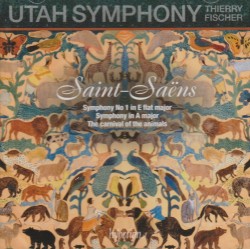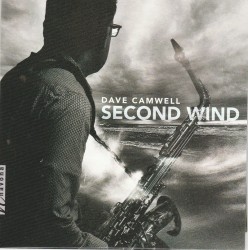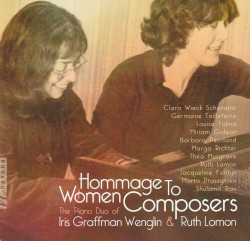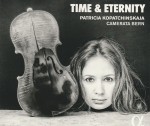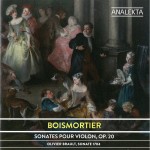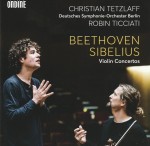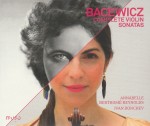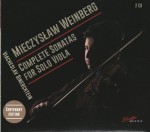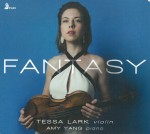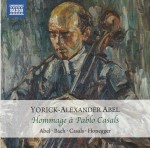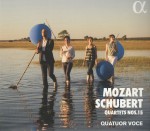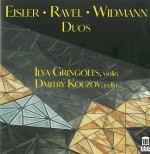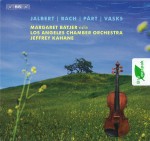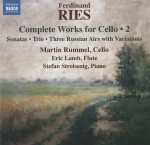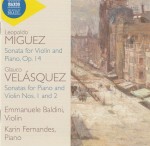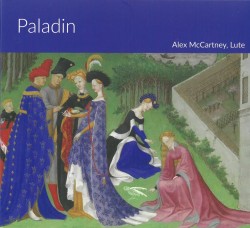Scarlatti – 52 Sonatas
Lucas Debargue
Sony Classical 19075944462 (lucasdebargue.com)
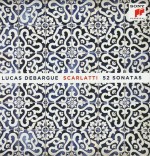 When the jury at the 2015 International Tchaikovsky Competition placed French pianist Lucas Debargue fourth (which was actually sixth, since the second and third prizes were each shared by two contestants), the outrage was predictable. For it was Debargue who had won over the audience – and the critics – with his dazzling mix of brilliant technique and poetic sensibility.
When the jury at the 2015 International Tchaikovsky Competition placed French pianist Lucas Debargue fourth (which was actually sixth, since the second and third prizes were each shared by two contestants), the outrage was predictable. For it was Debargue who had won over the audience – and the critics – with his dazzling mix of brilliant technique and poetic sensibility.
In any case, Debargue’s career has flourished. In January he’ll make his third appearance at Koerner Hall in Toronto. And Sony has just released his fifth recording, a four-disc set of sonatas by Domenico Scarlatti, the innovative Italian Baroque composer who was born in 1685 – the very same year as Bach and Handel – and spent his later, most productive, years at the royal courts in Portugal and Spain.
These short works are fundamental to the repertoire of harpsichordists. Though heard less often in piano recitals, they have been championed by pianists from Vladimir Horowitz and Alicia de Laroccha to András Schiff, Glenn Gould and Angela Hewitt. Many last just three or four minutes, even with Scarlatti’s repeats. But they have the impact of much grander works. Debargue’s selection of 52 sonatas represents less than a tenth of the 555 that Scarlatti wrote. But that’s four hours of some of the most glorious keyboard music ever written.
Scarlatti, a virtuoso harpsichordist, wrote these sonatas to play on his own instrument. So Debargue, ever mindful of the perils of playing them on a piano, makes minimal use of one of the piano’s most valued assets, the sustaining pedal. As a result, he is able to weave textures of delectable lightness and harpsichord-like clarity. But right from the first – and longest – work here, K206, Debargue makes full use of other resources offered by the piano to create an orchestra-scale range of colours and a variety of textures not possible on the earlier instrument. In K115 he highlights Scarlatti’s alluring harmonic shifts by shaping the broken chords and chromatic scales with dramatic crescendos and diminuendos. He does rush the tempo at times, though there are definite payoffs. K25, which is marked allegro, becomes more dramatic at his presto tempo, with the exquisite melodic lines emerging magically. I especially enjoy his bold use of rubato throughout. His ornaments are gorgeous, especially in episodic works like K268, though they can disrupt the pulse and prevent the Iberian rhythms from dancing.
The way Debargue combines the clarity of the harpsichord with the expressive power of the piano is fresh, imaginative and invariably enjoyable – a thoroughly modern approach to these exquisite works.
Pamela Margles
Bach – The Well-Tempered Clavier I & II
Heidrun Holtmann
Musicaphon M56922 (cantate-musicaphon.de)
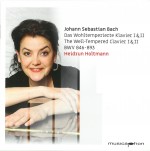 The Well-Tempered Clavier compositions have always represented a sanctuary of sorts for me; a sonic space for contemplation and stillness, unaffected by the fast pace of modern living, and a doorway to a singular notion of the reciprocity between the laws of music and the cosmos. A collection of two sets of preludes and fugues in 24 major and minor keys for solo keyboard, it is also a wonderfully useful treatise on the forms and style of Baroque times.
The Well-Tempered Clavier compositions have always represented a sanctuary of sorts for me; a sonic space for contemplation and stillness, unaffected by the fast pace of modern living, and a doorway to a singular notion of the reciprocity between the laws of music and the cosmos. A collection of two sets of preludes and fugues in 24 major and minor keys for solo keyboard, it is also a wonderfully useful treatise on the forms and style of Baroque times.
The Well-Tempered Clavier is structurally complex and creatively abundant, yet orderly and conceived with a teaching purpose in mind. And that is precisely what Heidrun Holtmann connects to in her interpretation – the magnificent architecture that varies from one key to another comes alive vibrantly on this album. She clearly outlines the relationships between preludes and fugues and subtly indicates the different characters of each key (not an easy task in a well-tempered tuning). Although the term clavier applied to a number of keyboard instruments in Bach’s time (hammerklavier, clavichord, spinet, harpsichord and organ) and it is clear that some of the pieces are better suited to a specific kind of keyboard, Holtmann succeeds easily in displaying how the richness and diversity of the piano supports and enriches the colours in the preludes and the virtuosity in the fugues.
Compositional masterpiece, insightful performance – perfect for solitary late autumn musings.
Ivana Popovich
Haydn – Early and Late Sonatas
Denis Levaillant
DLM Editions DLM 3018 (denislevaillant.net)
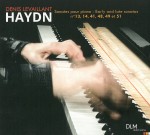 The keyboard sonatas of Franz Joseph Haydn represent a great feat of an opus, broad in range, dating from the composer’s youthful period to his final decades. The early 1790s – about 15 years before his death – saw Haydn in London, where he encountered new-fangled Broadwood pianos, outfitted with damper pedal and an extended range. Three irresistibly inventive London Sonatas were spawned. Today, so often are these late Beethovenian sonatas performed and celebrated that a listener rarely hears Haydn’s early essays for the keyboard, even in our contemporary age of rediscovery, mining the catalogues of infamous composers for their un-famous works.
The keyboard sonatas of Franz Joseph Haydn represent a great feat of an opus, broad in range, dating from the composer’s youthful period to his final decades. The early 1790s – about 15 years before his death – saw Haydn in London, where he encountered new-fangled Broadwood pianos, outfitted with damper pedal and an extended range. Three irresistibly inventive London Sonatas were spawned. Today, so often are these late Beethovenian sonatas performed and celebrated that a listener rarely hears Haydn’s early essays for the keyboard, even in our contemporary age of rediscovery, mining the catalogues of infamous composers for their un-famous works.
French composer, writer and pianist, Denis Levaillant, celebrates Haydn’s early works – as foil to later ones – in his new disc featuring Sonatas No.13 in E, No.14 in D, No.41 in B-flat, No.48 in C, No.49 in E-flat and No.51 in D, all recorded on a modern (Yamaha) grand. As is stipulated in the artist’s eloquent afterword to the liner notes, Levaillant has chosen to access the interpretive world of Haydn’s early sonatas through the stylistic lens of the later ones. He imagines (and supplements) “missing” indications from the composer and offers touches of pedal, pauses and anachronistic colours.
The results are satisfying, for the most part. A correlative access point for Levaillant’s readings is the functionality of early keyboard instruments: the harpsichord and clavichord. Sonatas Nos.13 and 14 most surely would have been realized on such instruments and Levaillant approaches the music with a certitude of form and fortitude of style that permeate the disc’s 15 tracks. The slightly rough and tumble edges – the rustic origins – of Franz Joseph Haydn’s art are brought into relief through Levaillant’s rendering.
Adam Sherkin
Mozart Piano Sonatas
David Fung
Steinway & Sons 30107 (steinway.com/music-and-artists/label)
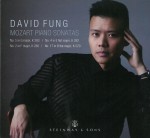 Steinway artist David Fung offers four lesser-known piano sonatas on his new album: the Piano Sonatas No.2 in F Major, K280, No.4 in E-flat, K282, No.5 in G Major, K283 and No.17 in B-flat, K570. Upon first hearing, Fung’s vision of Mozart’s keyboard music is immediately apparent. The (scant) liner notes make much of Fung’s musical upbringing and exposure to the opera – the Mozartian operatic stage in particular – but these references seem status quo and rather obvious in analogy; the comparisons do not quite do justice to Fung’s interpretive approach.
Steinway artist David Fung offers four lesser-known piano sonatas on his new album: the Piano Sonatas No.2 in F Major, K280, No.4 in E-flat, K282, No.5 in G Major, K283 and No.17 in B-flat, K570. Upon first hearing, Fung’s vision of Mozart’s keyboard music is immediately apparent. The (scant) liner notes make much of Fung’s musical upbringing and exposure to the opera – the Mozartian operatic stage in particular – but these references seem status quo and rather obvious in analogy; the comparisons do not quite do justice to Fung’s interpretive approach.
His is a unique and bold reading. Often, contemporaneous interpreters attempt to subdue their own (romantic) leanings, fearing to obscure the ideals of neoclassicalism as manifested in the music of W.A. Mozart. Fung, however, has no such qualms. He portrays a pianistic tableau of striking contrasts, unusual voicings and wanton manipulation of the dimension of time.
Employing a declamatory style, Fung directs the musical action from his keyboard with a strong command of phrasing and rhythmic impetus. He goes far beyond the customary approach to pulsation and accompaniment figures, in search of an inner energy of syncopated beats and subtle ostinati.
Upon repetition of A and B sections, Fung offers fresh takes on voicings that surprise the listener, challenging established conceptions of such material. By far his boldest strokes come in the form of timescale bending: the stretching out of rests, fermati and cadences, as he pushes values to the limit of neoclassical good taste. The resultant effect is generally pleasurable but does, on occasion, turn to parody. Notwithstanding, variety is the spice of life and let’s applaud Fung’s triumph in delivering his singular vision.
Adam Sherkin
Mozart Piano Concertos Vol.1
Anne-Marie McDermott; Odense Symfoniorkester; Scott Yoo
Bridge Records 9518 (bridgerecords.com)
Mozart – Piano Concertos Nos.17 & 24
Orli Shaham; St. Louis Symphony Orchestra; David Robertson
Canary Classics CC18 (canaryclassics.com)
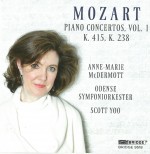 Charm, grace and cordiality are fading qualities in today’s hard-hitting, ego-driven age. Attributes from an older world and its refined modes of human interaction continue to recede from us, seemingly destined for near extinction. Every now and then, however, a specialized, sensitive artist will draw us back, time-capsule-like, to a continental European past where art and music existed to elevate, illuminate and beguile.
Charm, grace and cordiality are fading qualities in today’s hard-hitting, ego-driven age. Attributes from an older world and its refined modes of human interaction continue to recede from us, seemingly destined for near extinction. Every now and then, however, a specialized, sensitive artist will draw us back, time-capsule-like, to a continental European past where art and music existed to elevate, illuminate and beguile.
Ushering the listener toward this very world of period sensibility, Anne-Marie McDermott’s most recent Mozart disc features two lesser-known piano concerti, the Concerto in C, K415/387a and an earlier work of the same genre, in B-flat, K238. McDermott’s exceedingly good taste and technical prowess make for an ideal blend of musical pleasantries, delighting the listener with her innate ability to shape Mozartian lines, equal in parts lyrical, harmonic and rhythmic. This is an 18th-century pianism of poise and courtliness, neoclassical elegance and Viennese affability.
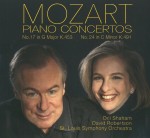 Another such record of Mozart keyboard concerti hails from a collaboration between pianist Orli Shaham and the St. Louis Symphony, under the direction of David Robertson. Here, two later concertos are presented: the airy No.17 in G Major, K453 and the brooding No.24 in C Minor, K491. Soundworlds apart, these pieces juxtapose handsomely on disc, showcasing the dazzling musicianship of pianist, conductor and orchestra with the personal relationship between Shaham and Robertson clearly audible.
Another such record of Mozart keyboard concerti hails from a collaboration between pianist Orli Shaham and the St. Louis Symphony, under the direction of David Robertson. Here, two later concertos are presented: the airy No.17 in G Major, K453 and the brooding No.24 in C Minor, K491. Soundworlds apart, these pieces juxtapose handsomely on disc, showcasing the dazzling musicianship of pianist, conductor and orchestra with the personal relationship between Shaham and Robertson clearly audible.
This fruitful partnership gleans splendour and lucidity from every note; the conversational exchange between soloist and orchestra is delectable – hefty at times – but largely cajoling in nature. Robertson encourages his players to take their rightful place in crafting the beauty of line and sculpting of colour that behooves the performance of any Mozart concerto. Like McDermott, Shaham enlivens each phrase with a graciousness and purpose, nearly anachronistic with its old-fashioned aplomb.
Shaham’s readings of Mozartian slow movements are of particular note. Her keen ear for colouristic novelty and lucid intonation rewards the listener again and again. Both Shaham and Robertson divine such a spirit of warmth – such love – from the heart of Mozart’s art that even the most probing pundit or cantankerous curmudgeon couldn’t help but be disarmed. What a thrill to hear Mozart’s music expressed with such timeless insight and overarching reverence for those inventive masterstrokes, born of another time and place.
McDermott and Shaham, in league with conductors Scott Yoo and David Robertson, are integral, generous artists who have conceived these four concerti in a manner both simple and satisfying. In today’s discographic landscape awash with record upon record of Mozart’s piano music, here we meet an old school oasis of felicity and joy, on par with the sublime Mozart interpretations that celebrated pianist Emanuel Ax is so well known for. Such recordings highlight, for the contemporary listener, the true nature and benefit of classical masterpieces, penned by the hand of that perennial favourite of involuntary geniuses: Wolfgang Amadeus Mozart.
Adam Sherkin
Schubert – The First Romantic
Mathieu Gaudet
Analekta AN 2 9181 (analekta.com/en/)
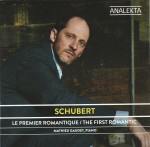 In view of his broad-based career Mathieu Gaudet should not be typecast, but this CD certainly adds to his credentials as a Schubert pianist. Consistency and long-range projection of moods, whether meditative, passionate or joyful, are required of the artist. Consider what Gaudet writes of the G Major Sonata (D894; 1826) finale: “The coda strives for transcendence, giving the impression of rising all the way to heaven.” I didn’t quite get that far — but his recording I find very moving. In the opening movement, with its sustained chords paced and balanced perfectly, this listener became meditative. The contrasting dotted-rhythm episodes and huge, anguished development section climax unfolded naturally; the long (19-minute) movement that I dread hearing in superficial readings achieved unforced inevitability here. Skipping the middle movements, I’ll just mention the rustic Austrian charm in Gaudet’s playing of the finale, with its festive character and bagpipe drones.
In view of his broad-based career Mathieu Gaudet should not be typecast, but this CD certainly adds to his credentials as a Schubert pianist. Consistency and long-range projection of moods, whether meditative, passionate or joyful, are required of the artist. Consider what Gaudet writes of the G Major Sonata (D894; 1826) finale: “The coda strives for transcendence, giving the impression of rising all the way to heaven.” I didn’t quite get that far — but his recording I find very moving. In the opening movement, with its sustained chords paced and balanced perfectly, this listener became meditative. The contrasting dotted-rhythm episodes and huge, anguished development section climax unfolded naturally; the long (19-minute) movement that I dread hearing in superficial readings achieved unforced inevitability here. Skipping the middle movements, I’ll just mention the rustic Austrian charm in Gaudet’s playing of the finale, with its festive character and bagpipe drones.
The early Schubert Sonata in F-sharp Minor (1817; its tangled history is too complex for this review) begins like a lied with the melody in plain octaves and the accompaniment figure’s rhythm repeated — excessively. Some interesting harmonic twists hint at what was to come from the prodigious composer. Gaudet convinces in the attractive middle movements: a sweet Romance and folk-like Scherzo and Trio. This disc is especially significant in view of plans for Gaudet’s 12-disc box-set comprising Schubert’s complete sonatas plus other major works, on the highly regarded Analekta label.
Roger Knox
First and Last Words
Yerin Kim
Sheva SH 217 (yerinkim.com)
 Yerin Kim’s new solo disc features early and (very) late piano music by Robert Schumann, plus two novel cycles by Alfred Schnittke. Schumann’s “Abegg” Variations, Op.1, opens the album: an earnest curatorial choice and one that sets a high standard of interpretive credibility to impress the listener thereafter. Kim’s playing is supple and clear with a sincere directness of expression. Following Schumann’s first opus, we greet the sturdy Allegro, Op.8 with similar pianistic appreciation. Onwards to the last of Schumann’s pieces: the Geistervariationen, (“Ghost Variations”) WoO 24 of 1854 were eerily written during the time leading up to the composer’s admission into a mental asylum, ostensibly the darkest period of his life. Kim’s own program notes identify the “angels and demons” that pervaded Schumann’s mind and pen during those haunted late years.
Yerin Kim’s new solo disc features early and (very) late piano music by Robert Schumann, plus two novel cycles by Alfred Schnittke. Schumann’s “Abegg” Variations, Op.1, opens the album: an earnest curatorial choice and one that sets a high standard of interpretive credibility to impress the listener thereafter. Kim’s playing is supple and clear with a sincere directness of expression. Following Schumann’s first opus, we greet the sturdy Allegro, Op.8 with similar pianistic appreciation. Onwards to the last of Schumann’s pieces: the Geistervariationen, (“Ghost Variations”) WoO 24 of 1854 were eerily written during the time leading up to the composer’s admission into a mental asylum, ostensibly the darkest period of his life. Kim’s own program notes identify the “angels and demons” that pervaded Schumann’s mind and pen during those haunted late years.
True standouts come next: the Five Preludes and a Fugue (1953-54) and Aphorisms (1990) by Alfred Schnittke. Kim evidently has a knack for this unusual repertoire in which her virtuosity – of both the technical and intellectual variety – can be aptly demonstrated. This is highly focused music with a taut contrapuntal sense and localized formal design – an appropriate complement to Schumann’s first and last piano works.
The final cycle on this disc, Five Aphorisms, represents a late stage in Schnittke’s output, less accessible in its abstracted lyricism and esoteric brevity. Suddenly, the listener is thrust into a contemporary soundscape of jarring gesture: the sonic by-products of an age where man has made, met and managed machines. Here are the very real angels and demons of our own brave new world. And Kim governs them all, with just as much assurance as she does the last, ghostly “words” of Robert Schumann.
Adam Sherkin
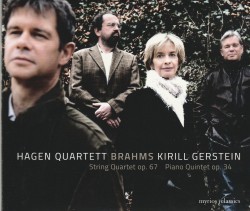 Brahms – String Quartet Op.67; Piano Quintet Op.34
Brahms – String Quartet Op.67; Piano Quintet Op.34

